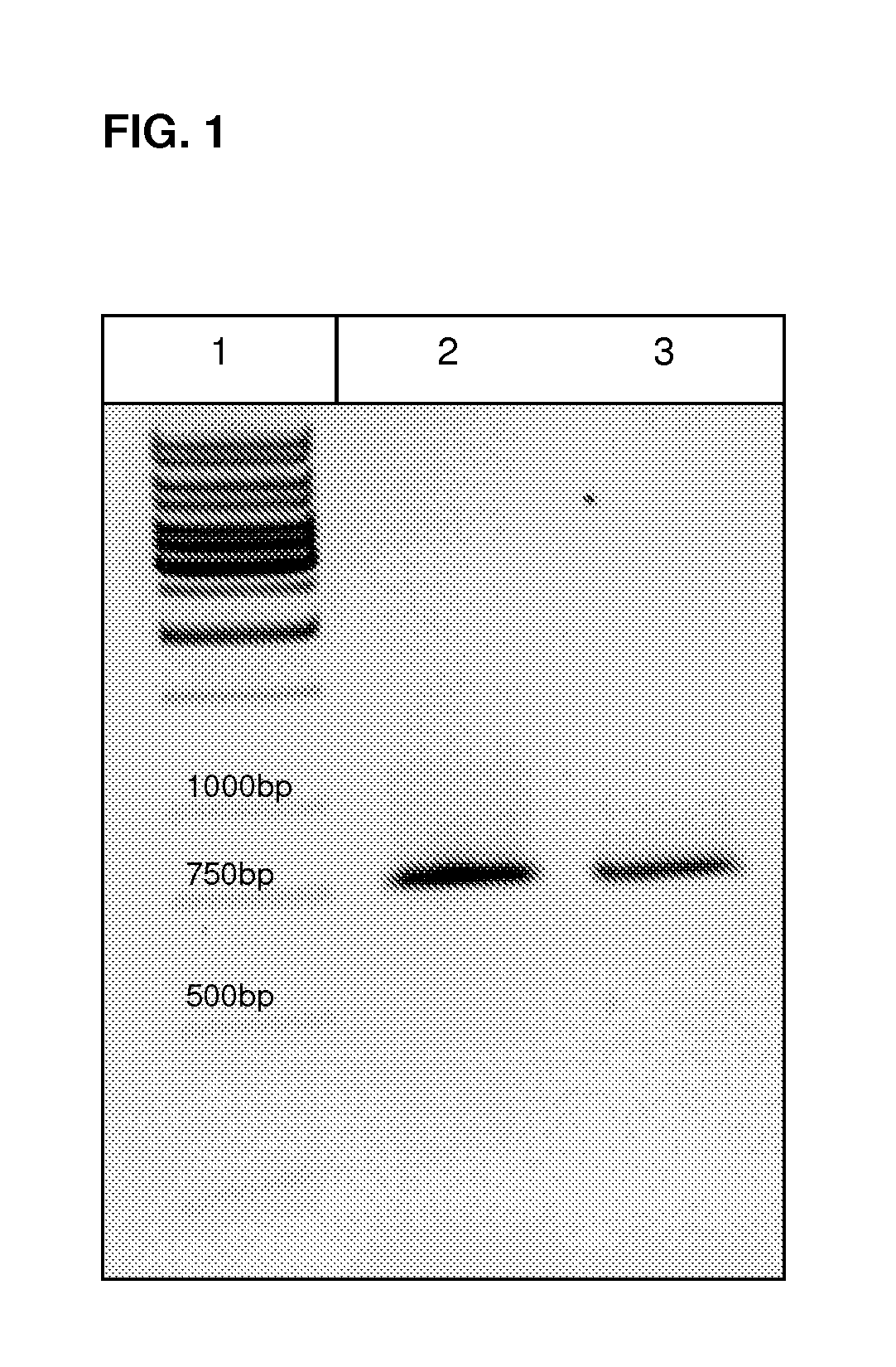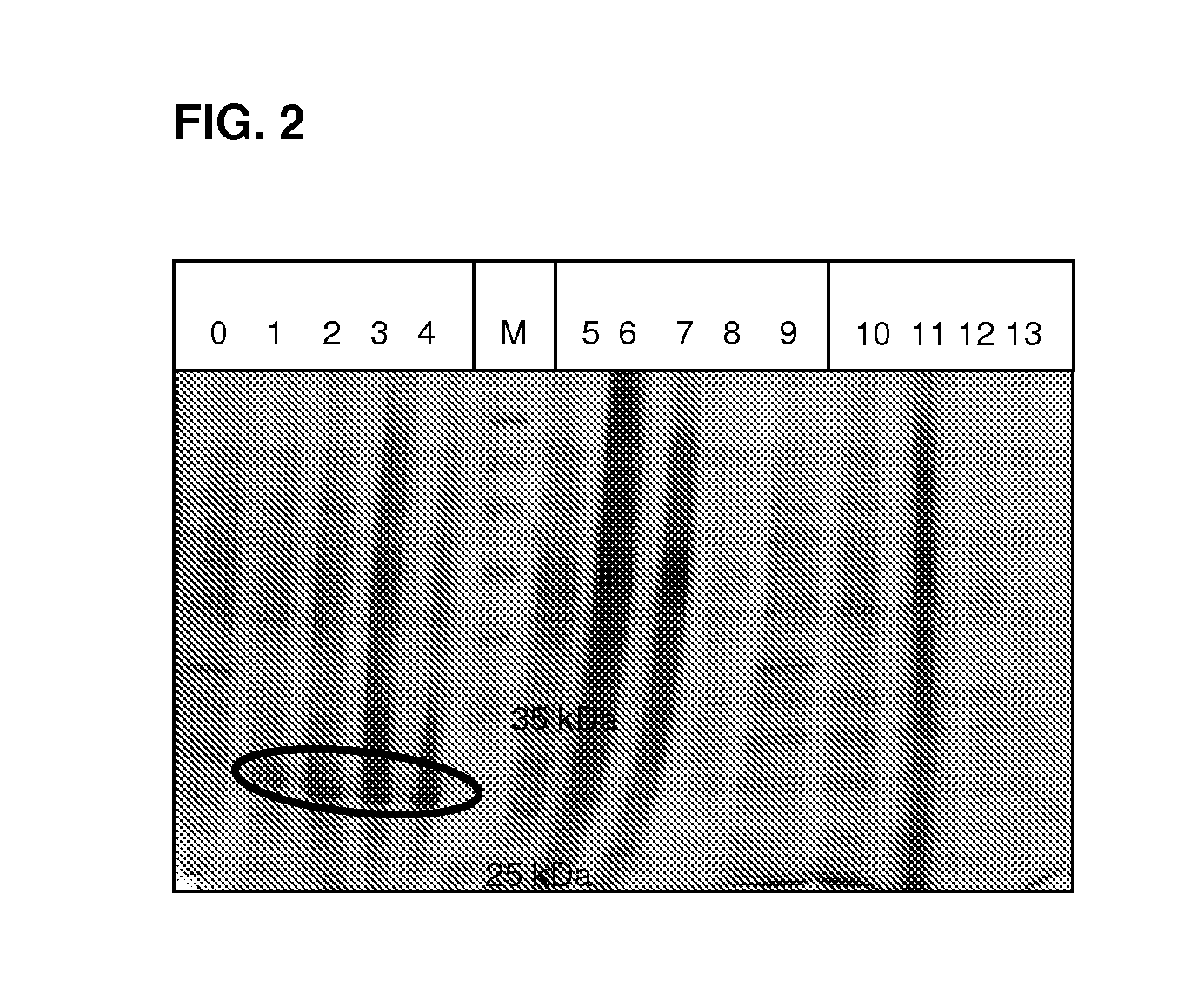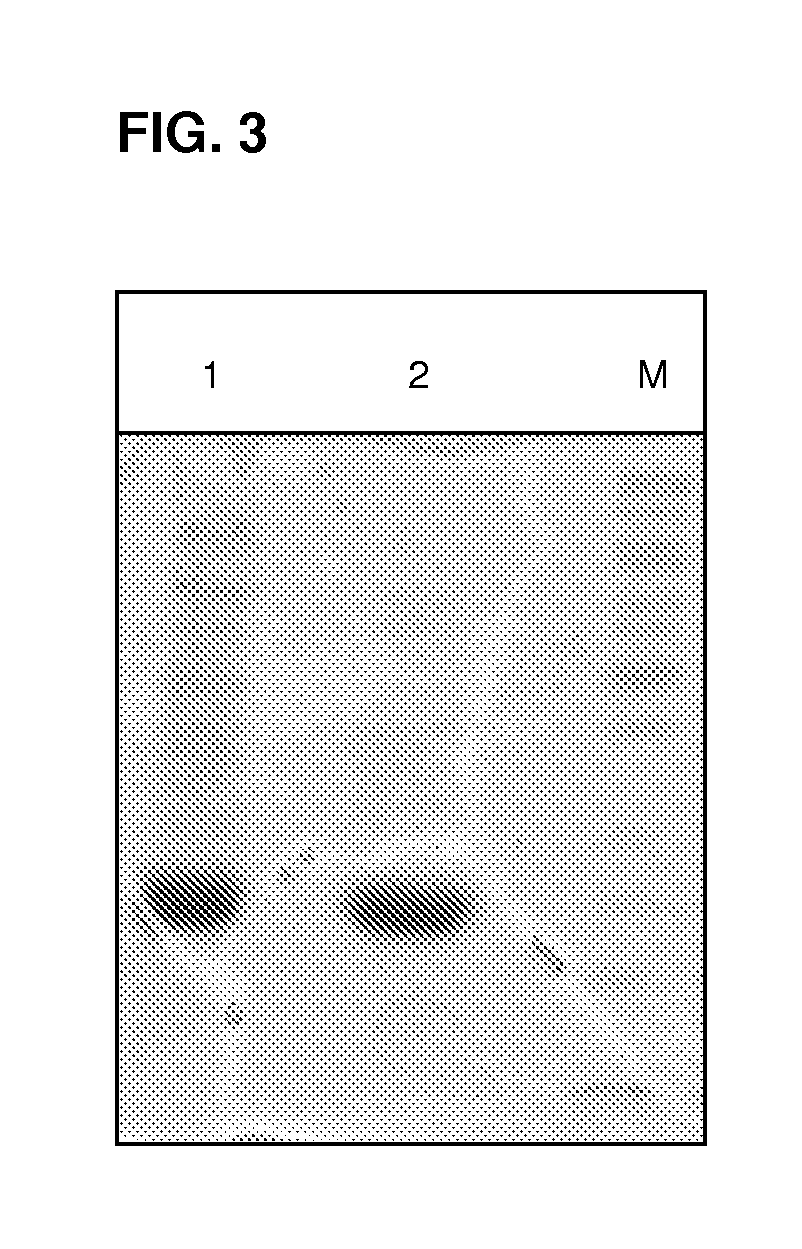(r)-hydroxynitrile lyase from brassicaceae
a technology of r-hydroxynitrile and brassicaceae, which is applied in the field of polypeptides, can solve the problems of limited use on an industrial scal
- Summary
- Abstract
- Description
- Claims
- Application Information
AI Technical Summary
Benefits of technology
Problems solved by technology
Method used
Image
Examples
example 1
Database Search
[0065]A database search was carried out with the amino acid for the HNL from Manhiot esculenta (Protein-Protein Blast, standard adjustment, http: / / www.ncbi.nlm.nih.gov / blast / ); the results were filtered onto the organism Arabidopsis thaliana. The resulting list contains 22 sequences with at least 47% similarity as regards the amino acid sequence; 5 thereof are listed in Table 2. The genes listed in Table 2 were cloned, expressed and investigated for HNL activity.
TABLE 2List of genes resembling MeHNL from Arabidopsis thalianaTAIR-SimilaritynomenclatureAccession no.to MeHNL (%)Remarks / miscAt4g0990NM 11705850Cloned and expressed,no activityAt3g10870AY09669248Cloned and expressed,no activityAt3g50440AY14203157Cloned and expressed,no activityAt4g37150BT00622756Cloned and expressed,no activityAt5g10300NP 19659267Cloned and expressed,HNL activity (a poly-peptide in accordancewith the invention)
example 2
Amplification of Gene At5g10300 (Hereinafter AtHNL) from cDNA, Cloning in Expression Vector pET28a and Transformation in E. coli
[0066]mRNA was isolated from Arabidopsis germs using “RNeasy® Plant Mini Kits” from Qiagen; the procedure was carried out in accordance with the instructions contained in the kit. Using “RevertAid™ First Strand cDNA Synthesis Kits” from Fermentas, the mRNA obtained was transcribed into cDNA. This acted as the target structure for amplification of the HNL-homologous gene. PCR was carried out with sequence-specific primers (SEQ ID NO: 3 & 4) at an annealing temperature of 58° C. After purification of the PCR product on a DNA agarose gel (FIG. 1) using a commercially available gel elution kit, sticky ends were produced with the restriction enzymes Ncol and Xhol. Next, the fragment could be cloned into the vector pET28a which had also been cleaved with the same restriction enzymes. Ligation was carried out for 16 h at 16° C. The sequence of the thus cloned ins...
example 3
Expression of Plasmids in E. coli
[0068]For the expression of HNL, initially an overnight culture of E coli (BL21(DE3), transformed with pAtHNL) at 30° C. in LB-Medium with 50 μg / mL kanamycin was inoculated with a single colony, The next morning, the main culture (also LB-medium / kanamycin) was over-inoculated with the preculture in a ratio of 1:20. Once an optical density of 0.6 to 0.8 had been reached at 550 nm, the cultures were induced with 0.4 mM of IPTG. After growing for 5 h at 30° C., the cells could be harvested by centrifuging and stored at −20° C. Expression success was monitored on SDS-polyacrylamide gel (FIG. 2). The amino acid sequence gave a theoretical molecular weight of 29.2 kDa for the AtHNL subunit.
PUM
| Property | Measurement | Unit |
|---|---|---|
| temperature | aaaaa | aaaaa |
| time | aaaaa | aaaaa |
| pH | aaaaa | aaaaa |
Abstract
Description
Claims
Application Information
 Login to view more
Login to view more - R&D Engineer
- R&D Manager
- IP Professional
- Industry Leading Data Capabilities
- Powerful AI technology
- Patent DNA Extraction
Browse by: Latest US Patents, China's latest patents, Technical Efficacy Thesaurus, Application Domain, Technology Topic.
© 2024 PatSnap. All rights reserved.Legal|Privacy policy|Modern Slavery Act Transparency Statement|Sitemap



